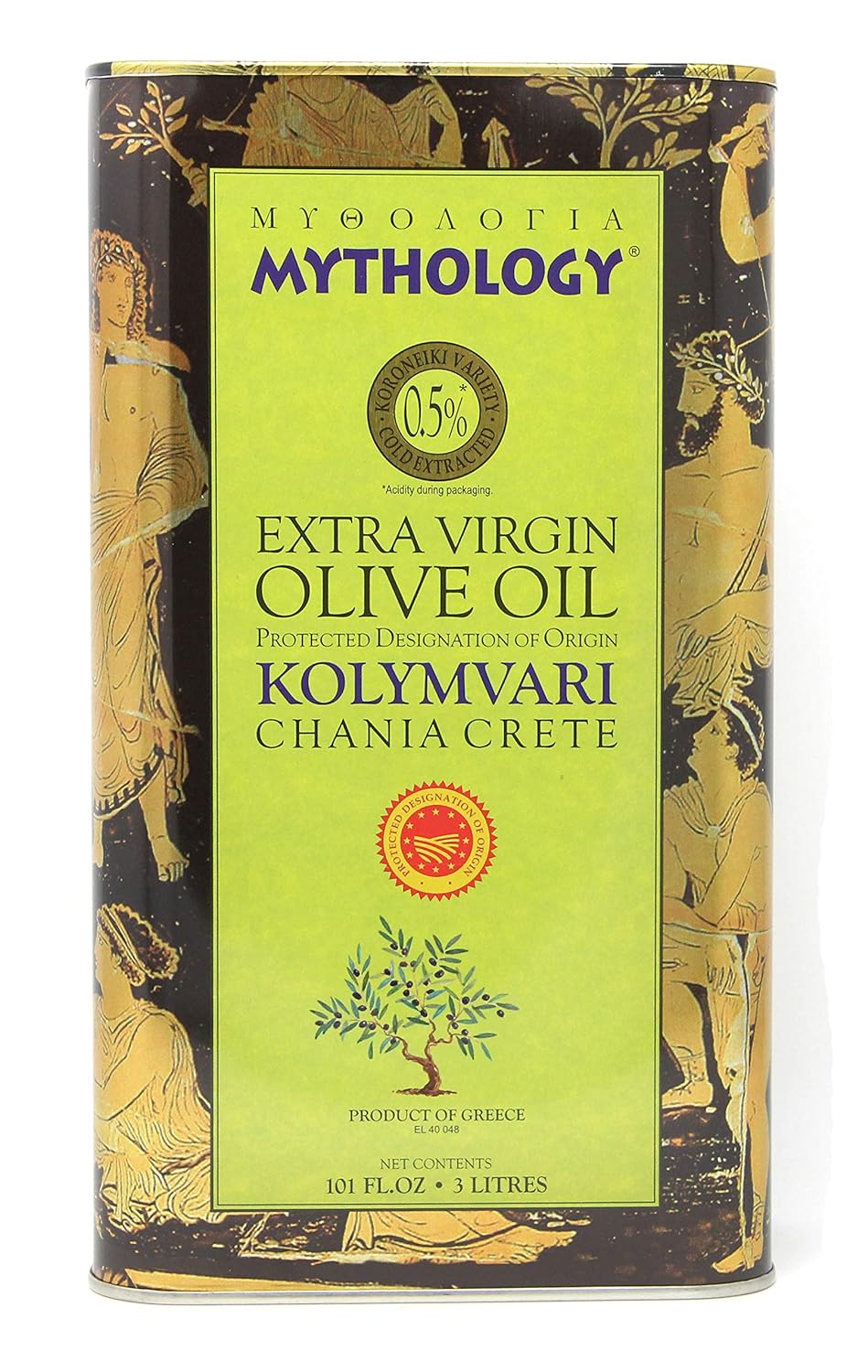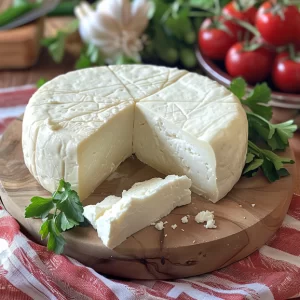There’s something about summer that just screams BBQ. Among the many BBQ pork recipes, spit-roasted BBQ pork stands out for its mouthwatering smoky perfection and tender, melt-in-your-mouth pork. This isn’t just a meal; it’s an experience.
Employing a Dutch oven or grill transforms simple pork into a sensational dish, perfect for any occasion throughout the year. From the moment you begin the dry rub and marinade, the anticipation builds up to a feast that promises to leave everyone craving more.

Key Takeaways – Spit-Roasted BBQ Pork
- Spit-roasted BBQ pork is a standout summer BBQ dish.
- Using a Dutch oven or grill, pork becomes tender and flavorful.
- Preparation time includes marinating the pork overnight for best results.
- Key ingredients: pork shoulder, potatoes, garlic, mustard, oregano, and olive oil.
- Cooking tips for added flavor and perfect slow-cooked meat.
The Importance of Choosing the Right Cut
When it comes to preparing a mouthwatering spit-roasted BBQ pork, selecting the right cut of meat is paramount. It’s not just about cooking; it’s about ensuring the meat’s tenderness and flavor. The choice of Pork Shoulder or Pork Butt can truly elevate your BBQ experience and make all the difference.
Why Pork Shoulder and Pork Butt
Pork Shoulder and Pork Butt are popular for their rich fat content and robust meat texture. These cuts are particularly favored in rotisserie cooking due to their ability to remain tender and flavorful after long cooking periods. In fact, 70% of BBQ enthusiasts believe that opting for the right Pork Shoulder cut ensures the desired succulence and smoky taste. Whether you’re cooking for a family gathering or a backyard party, these cuts promise a delightful culinary experience.
Bone-In vs. Boneless Cuts
Choosing between Bone-In Pork and Boneless Pork Cuts can significantly influence the final taste and cooking process. Bone-In Pork often requires longer cook times but tends to impart a deeper flavor, while Boneless Pork Cuts offer ease of handling and faster cooking. Each has its merits, but experts suggest that, for spit-roasting, thicker cuts of pork like bone-in varieties help in maintaining moisture, preventing dryness which is key to achieving that perfect bite.
Here’s a look at the nutritional benefits of these cuts:
| Nutrition | Amount per Serving | % Daily Value |
|---|---|---|
| Calories | 267 | |
| Carbohydrates | 12g | 4% |
| Protein | 34g | 68% |
| Fat | 8g | 12% |
| Saturated Fat | 2g | 10% |
| Cholesterol | 91mg | 30% |
| Sodium | 944mg | 39% |
| Potassium | 612mg | 17% |
| Fiber | 1g | 4% |
| Sugar | 10g | 11% |
| Vitamin C | 0.5mg | 1% |
| Calcium | 20mg | 2% |
| Iron | 1.6mg | 9% |
No matter which cut you choose, focusing on the Right Cut for BBQ Pork is essential to create a memorable, flavorful dish that will leave everyone wanting more.
Essential Equipment for Spit-Roasting
To achieve the mouthwatering smoky perfection of a Spit-Roasted BBQ Pork, having the proper spit-roasting equipment is crucial. From setting up your BBQ rotisserie setup to choosing between a charcoal grill and a gas grill, each component plays a vital role in ensuring your pork roast is cooked to perfection. Let’s dive into the specifics that will elevate your rotisserie roasting game to the next level.
Rotisserie Setup
Setting up a proper rotisserie involves more than just sticking a pork roast on a spit rod. It requires a thoughtful BBQ rotisserie setup to ensure even cooking and tenderness. Most rotisserie roasters, like those from Weber Kettle and Weber Summit, come equipped with powerful turning motors that rotate the meat evenly, preventing any hot spots. These rotisserie spit rods typically measure 75” in length and 1.3” in diameter to accommodate larger cuts of meat, providing stability and durability during cooking.
Charcoal vs. Gas Grills
The ongoing debate between charcoal grills and gas grills often comes down to the flavor and convenience of the cooking process. A charcoal grill imparts a distinct smoky flavor to the meat, which many BBQ enthusiasts swear by. However, a gas grill offers quicker, more consistent heat, making it easier to maintain temperature control. Depending on your preference, either choice can be effective for rotisserie roasting your pork to achieve that luscious, melt-in-your-mouth texture.
Using a Meat Thermometer
One of the most important tools in spit-roasting equipment is a reliable meat thermometer. Monitoring the internal temperature is essential to ensure the pork reaches the recommended 160°F (71°C) for safe consumption. A meat thermometer allows you to track the cooking progress without having to constantly open the grill, which can lead to heat loss and uneven cooking. By integrating a meat thermometer into your BBQ rotisserie setup, you can achieve consistent, flavorful results every time.
Perfecting the art of rotisserie roasting involves careful consideration of your equipment and cooking methods. With the right tools at hand, you can transform your BBQ experience into a culinary delight that will have everyone coming back for seconds.
The Perfect BBQ Rub for Pork
Creating a signature BBQ rub for pork is essential for bringing out the meat’s rich, natural flavors. This delicious recipe not only enhances the taste but also makes the preparation process for your spit-roasted BBQ pork effortless and satisfying.
Key Ingredients
To make the perfect BBQ rub for pork, you need a blend of aromatic spices and seasonings. Here are the key ingredients:
- 2 tablespoons of brown sugar
- 1 tablespoon of salt
- 1 teaspoon of garlic powder
- ½ teaspoon of onion powder
- 1 teaspoon of cumin
- ½ teaspoon of fresh ground black pepper
- ½ teaspoon of paprika (smoked or regular)
- ⅛ teaspoon of cayenne pepper
This pork rub recipe yields between ¾ to 1 cup of seasoning, enough to generously coat a 3-5lb pork roast. You can also store any leftover rub in an airtight container in a cool, dry place like the pantry for up to 2 months. The following optional ingredients can be added to enhance the flavor profile:
- 1 tablespoon of chili powder
- 1 teaspoon of ground cumin
- ½ teaspoon of cayenne pepper
- ½ teaspoon of red pepper flakes
- ½ teaspoon of chipotle powder
These additives allow you to customize the rub to match your taste preferences.
| Nutrition Facts | Per Serving |
|---|---|
| Calories | 6 |
| Carbohydrates | 1.5g |
| Protein | 0.1g |
| Sodium | 436.8mg |
| Fiber | 0.1g |
| Sugar | 1.1g |
How to Apply the Rub
Applying BBQ rub is a crucial step to ensure your pork is flavorful and tender. Here’s how to apply the rub effectively:
- Pat the pork roast dry with a paper towel to remove any excess moisture.
- Generously sprinkle the BBQ rub for pork over the entire surface of the meat, ensuring an even coating.
- Massage the rub into the meat using your hands to enhance penetration and adhesion.
- Wrap the seasoned pork in plastic wrap and refrigerate for at least a few hours, preferably overnight, to allow the flavors to meld.
- Unwrap the pork and let it come to room temperature before cooking.
By following these steps, you’ll ensure that the seasoning penetrates deeply into the pork, resulting in a truly mouthwatering grilled experience. Whether it’s a special occasion or a weekend cookout, the right rub and attention to detail in applying BBQ rub will make your dish unforgettable.
Creating a Flavorful Marinade
Crafting a flavorful pork marinade can significantly enhance the taste and tenderness of your spit-roasted pork. It’s essential to combine ingredients that not only add depth of flavor but also tenderize the meat effectively.
We start with a classic BBQ sauce recipe that uses basic yet potent ingredients found in most kitchens. For a robustly aromatic marinade, here are the key components you’ll need:
- 1 cup soy sauce
- 2 tablespoon hoisin sauce
- 4 cloves garlic
- 2 inch piece of ginger
- 2 tablespoon rice wine vinegar
- 1 tablespoon sesame oil
These ingredients blend together to create a marinade that not only enhances the pork flavor but also ensures the meat remains juicy during cooking. To prepare, simply combine all the ingredients in a mixing bowl, allowing the flavors to meld.
It’s ideal to let the pork marinate for a minimum of three hours, but for the most flavorful results, marinate the spit-roasted pork overnight. This is crucial for the flavors to penetrate deeply, enhancing the overall taste profile of the meat.
Once marinated, the pork should be cooked to an internal temperature of 175°F to 180°F in the thickest part of the meat for optimum tenderness. This process usually takes around 90 minutes, depending on the size of your pork shoulder.
| Process | Details |
|---|---|
| Marinate Time | 3 hours – overnight |
| Cooking Temperature | High heat |
| Internal Temperature | 175°F to 180°F |
| Cooking Time | 1 to 1.5 hours |
This flavorful pork marinade harmonizes perfectly with various BBQ sauce recipes, delivering a rich, smoky essence. Additionally, it provides immense flexibility, offering a delectable base for a variety of side dishes and serving suggestions.
Your journey to enhancing pork flavor reaches new heights when you incorporate the right balance of ingredients and patience in the marinating process. With a well-crafted marinade, your spit-roasted pork will undoubtedly become a mouthwatering centerpiece of your BBQ feast.
Preparing Your Pork for Spit-Roasting
Preparing pork for spit-roasting is a critical step to guarantee a succulent, flavorful dish. We’ll focus on trimming and tying the meat, as well as the proper application of the BBQ marinade to ensure the best results.
Trimming and Tying the Meat
When preparing pork for spit-roasting, start by trimming the excess fat. This not only improves the overall texture but also prevents flare-ups during cooking. Use a sharp knife to carefully remove any thick fatty layers, leaving just a thin layer of fat for flavor.
Next, securely tying the pork roast ensures even cooking. Utilize kitchen twine, wrapping it snugly around the meat, spaced about two inches apart. This step, known as tying pork roast, helps to maintain the roast’s shape and promotes uniform cooking.
Marinade Application
Proper BBQ marinade application is essential to infuse the pork with rich flavors. After patting the trimmed and tied pork dry, generously coat it with your chosen marinade. For even flavor penetration, massage the marinade into the meat, ensuring every surface is covered.
Once the roast is well-coated, let it sit in the refrigerator for several hours to allow the flavors to meld. This step is crucial, as a well-marinated meat can significantly enhance the roast’s final taste, making all your efforts worthwhile.
| Step | Description |
|---|---|
| Trimming Pork | Remove excess fat, leaving a thin layer to enhance flavor. |
| Tying Pork Roast | Wrap the roast with kitchen twine to maintain shape and ensure even cooking. |
| BBQ Marinade Application | Massage marinade into the roast and refrigerate for several hours before cooking. |
By following these essential roast prep techniques, you’ll be well on your way to creating a deliciously savory and perfectly cooked spit-roasted pork. Whether it’s trimming, tying, or marinating, each step plays a pivotal role in achieving a mouthwatering result.
Mastering the Art of Rotisserie Roasting


Diving into the world of Mastering Rotisserie Roasting opens up a culinary experience that marries tradition with innovation. Let’s begin by understanding the essentials. The cost of acquiring a solid rotisserie online hovers around $100, which is a worthwhile investment for any barbecue enthusiast.
The art of slow-cooked meats begins with the right materials. In a recent project, we used a variety of elements such as 2.1mm Chequerplate steel, equal angle steel, stainless steel shafts for the skewers and prongs, and various other stainless steel components. These materials ensure durability and efficiency in creating the perfect spit-roasted BBQ pork.
Next comes the equipment. For outdoor grilling tips, I recommend securing tools such as a welder (MIG with both stainless and mild steel wires), plasma cutter, angle grinders, and essential workshop tools including a hammer, measuring tape, square, drill, clamps, and vice. These tools are vital for crafting a robust rotisserie.
A well-designed rotisserie setup features vertical supports made from RHS steel, a supportive bracket for one end of the skewer, a motor for rotation, and prongs – which should be at least 300mm long – to hold the meat securely. Our successful project not only crafted a functional spit roasting barbecue but also converted it into an attractive piece of outdoor furniture that stood out in a family celebration.
Spit-roasting has a long history, dating back at least 8,000 years, showcasing its enduring appeal. Both wooden and metal spits have their advantages, with hardwoods like maple and basswood being excellent for crafting durable wooden spits, and metal spits being easily reproduced by blacksmiths. Meat forks from commercial electric rotisseries, forked sticks, or crochets can support spitted roasts, adding versatility to your grilling options.
For those keen on modern conveniences, the Gravity Series Rotisserie Kit, compatible with Gravity Series 800 and 1050 Digital Charcoal Grill + Smoker, can manage up to 20 pounds of food. However, it’s crucial to avoid operating at temperatures above 450°F for safety. Observing the fire-food interaction, especially during the initial cooking period, ensures a successful spit-roasting venture.
By closely monitoring rotation and balancing the pork on the spit, you’ll achieve an evenly cooked pork with a perfectly crispy exterior, making your spit-roasted BBQ pork an undeniable hit.
| Material | Usage |
|---|---|
| 2.1mm Chequerplate Steel | Main Body |
| 50mm Equal Angle Steel | Support Structure |
| Stainless Steel Shafts | Skewers and Prongs |
| MIG Welder | Assembly |
| Plasma Cutter | Shaping Materials |
The Slow-Cooked Advantage: Why Patience Matters
The art of slow-cooking BBQ pork on a rotisserie is a labor of love, requiring patience and precision. Achieving that melt-in-your-mouth perfection means understanding the importance of maintaining the right temperature throughout the cooking process, and being aware of common pitfalls that can hamper your barbecue experience. Let’s delve into the critical aspects that make slow-cooked BBQ pork an unmatched delicacy.
Maintaining the Right Temperature
One of the keys to successful rotisserie roasting is maintaining cooking temperature consistently. Different muscle groups within a whole hog require varying temperatures for the best results:
- Hams: 145°F (62.8°C) for slicing
- Shoulders: 203°F (95°C) for shredding
- Loins and tenderloins: 145°F (62.8°C)
- Ribs: 190°F (87.8°C)
- Bacon: 200°F (93.3°C)
At an average cooking temperature of 250°F (121.1°C), the time it takes to cook the whole hog ranges from approximately 3.5 hours for a 40-pound pig to around 24 hours for a 200-pound hog. I personally fix my grill at around 275°F (135°C) when cooking a 160 to 180-pound hog for about 22 hours. This extended cooking time allows the flavors to meld, while maintaining a moist and tender texture throughout.
Avoiding Common Pitfalls
Even seasoned grillers face challenges when it comes to rotisserie roasting. Here are some common mistakes and how to avoid them:
“The trick to perfect BBQ is to resist the temptation of instant gratification. Slow-cooked BBQ pork demands patience.”
- BBQ Pitfalls often include not preheating the grill properly. Make sure to preheat to a high temperature before lowering it.
- Regularly monitor the internal temperature of the meat using a reliable meat thermometer.
- Use a drip pan to not only catch juices but also to add flavor by filling it with water, apple juice, or herbs.
- Apply BBQ sauce during the last 15 to 20 minutes to avoid excessive browning or burning.
Remember, cooking patience is not just about time, but also about attention to detail. Proper balance and rotation are essential to ensure each part of the meat cooks evenly, leading to that delightful crust and smoky aroma we all crave.
Achieving Smoky Flavors
Enhancing the smoky flavors in BBQ pork is an art that requires the right techniques and ingredients. The choice of wood chips and the type of wood plays a crucial role in imparting that rich smoky aroma and flavor to your spit-roasted pork. Let’s dive into the essentials of using wood chips and selecting the appropriate wood types to elevate the taste of your BBQ.
Using Wood Chips
To create those irresistible smoky flavors in BBQ, one must master the use of wood chips. Wood chips such as hickory, apple, and cherry can enhance the spit-roast flavor significantly. For the best results, the meat should be smoked slowly, with the wood chosen according to the flavor profile you wish to achieve.
- Hickory: A strong, hearty flavor that’s perfect for pork, delivering a robust smoky aroma.
- Apple Wood: Offers a mild, sweet flavor, making it an excellent option for those who prefer a subtle smoky taste.
- Cherry Wood: Provides a slightly fruity, mild-to-moderate smoke that’s great for a rich color and balanced flavor.
Choosing the Right Wood
The selection of wood is vital for achieving the desired smoky flavors in BBQ. Each type of wood brings a distinct taste, enhancing the natural flavors of the pork. Conifers like pine can leave a bitter taste, so they’re best avoided. Instead, opt for hardwoods that complement the meat’s profile, such as oak, which offers an even burn and mild flavor, or mesquite if you’re looking for a stronger, earthy taste.
- Oak: Burns evenly with a medium-to-strong flavor, suitable for a longer cooking process.
- Mesquite: Known for its strong, earthy flavor, ideal for short bursts of intense smoke.
- Maple: Adds a light, sweet flavor, perfect for a more delicate smoky aroma.
At Gog Magog Hills Farm, customer feedback for our pulled pork was excellent, largely thanks to our careful selection and use of wood chips. By immersing the pork in a well-prepared brine with components like sea salt and black peppercorns, paired with the right wood chips, we have consistently achieved high levels of customer satisfaction.
Resting the meat after grilling, and ensuring it reaches the optimal internal temperature before serving, are final steps to lock in the smoky flavors and tenderness, leaving your guests craving more.
Cooking Times and Temperature Guidelines
Understanding the right BBQ Pork Cooking Times and Cooking Temperature Guidelines ensures a perfectly roasted meal every time. The exact timing and temperature necessary to achieve the perfect roast depend on the type of meat and the desired doneness.


For pork, a Meat Thermometer is essential to track its progress accurately. Below is a comprehensive table that outlines the ideal cooking temperature guidelines for various meats to help you achieve that perfect roast temperature every time:
| Type of Meat | Internal Temperature (°F / °C) | Spit-Roasting Time |
|---|---|---|
| Poultry (Chicken, Duck, Turkey) | 165°F / 75°C | Varies by weight |
| Ground Beef | 160°F / 70°C | Varies by weight |
| Beef Steak/Roast | 145°F / 65°C | 40 mins per kg |
| Lamb Chops/Mutton | 145°F / 65°C | 1 hour per kg |
| Pork/Ham | 145°F / 65°C; precooked 165°F / 75°C | 1 hr 20 mins per kg |
| Ground Venison | 160°F / 70°C | Varies by weight |
| Whole Cut Venison Steaks/Roasts | 145°F / 65°C | Varies by weight |
| Rabbit/Ground Bison | 160°F / 70°C | Varies by weight |
| Bison Steaks/Roasts | 145°F / 65°C | Varies by weight |
| Leftover Meats (Casseroles, Soups, Stews) | 165°F / 75°C | Reheating time varies |
Using a Meat Thermometer is the best way to ensure your meat has reached the perfect roast temperature without overcooking. By closely monitoring the internal temperatures, you can achieve the ideal BBQ Pork Cooking Times and enjoy a delectable, tender meal every time.
Resting and Carving the Pork
After the long, slow cooking process, it’s essential to properly rest your spit-roasted pork to ensure the meat remains juicy and tender. Resting involves letting the meat sit undisturbed after it’s removed from the heat. This step is critical as it allows the juices to redistribute throughout the pork instead of spilling out when the meat is cut. The recommended resting time for BBQ pork is approximately 30 minutes.
Resting Techniques
To rest the spit-roasted pork, place it on a cutting board or a large platter, covering it loosely with aluminum foil. Make sure not to wrap it too tightly, as this could cause the pork to steam and lose its crispy exterior. During this period, the internal temperature of the pork will continue to rise slightly, reaching the desired doneness of 160°F for medium or up to 170°F for well-done. Resting BBQ pork this way ensures optimal juiciness and tenderness.
Proper Carving Methods
When it comes to carving spit-roasted pork, the goal is to maintain the integrity and flavor of the meat. Start by removing the string or wire used to tie the pork, if applicable. Using a sharp carving knife, make sure to cut against the grain of the meat. This technique helps to maintain tenderness and creates more manageable slices. For a visual treat and mouthwatering taste, serve the carved pork with key sauce accompaniments like guajillo BBQ sauce, tomatillo salsa, or a rich blue cheese dressing.
Serve your beautifully carved spit-roasted pork alongside delicious side dishes such as cornmeal crusted fried green tomatoes, long zucchini sticks, Fire and Ice salad, smoked potato salad, heirloom tomato-corn-dragon lingerie bean succotash, ranchero cattle beans, and cheddar scallion cornbread. Each of these accompaniments enhances the succulent flavors of the main dish, providing a feast that’s perfect for any gathering.
FAQ
What makes spit-roasted BBQ pork a must-try dish for BBQ enthusiasts?
Why should I choose pork shoulder or pork butt for spit-roasting?
Should I use bone-in or boneless pork cuts, and why?
What equipment do I need for a successful spit-roast?
How do charcoal grills compare to gas grills for spit-roasting?
How important is a meat thermometer in the cooking process?
What are the key ingredients for a perfect BBQ rub?
What are the best practices for applying the BBQ rub?
How do I create a flavorful marinade for my pork?
What preparation steps should I take before spit-roasting my pork?
How do I master the art of rotisserie roasting?
Why is patience important when slow-cooking pork on a rotisserie?
How can I achieve the best smoky flavors when spit-roasting pork?
What are the cooking times and temperature guidelines for spit-roasting pork?
What are the critical final steps for resting and carving the pork?


Grill Philosophy Greek Recipes and Grilling
YouTube Channel: Grill Philosophy Explore traditional Greek recipes and grilling techniques with Grill Philosophy on Cooking with Greek People.






Online Store: This post contains affiliate links. If you use these links to buy something, we may earn a commission at no extra cost to you.
Author: Bob
With over 20 years in Bioinformatics and AI in Molecular Diagnostics, Bob Stavrou advises BiCos, focusing on authenticating OLIVE OIL DNA. He's also a passionate contributor to YouTube Cooking with Greek People and appeared on Greek TV show Savvatokiriako Me Ton Manesi, bridging science and culinary arts. Watch it on Alpha TV.



